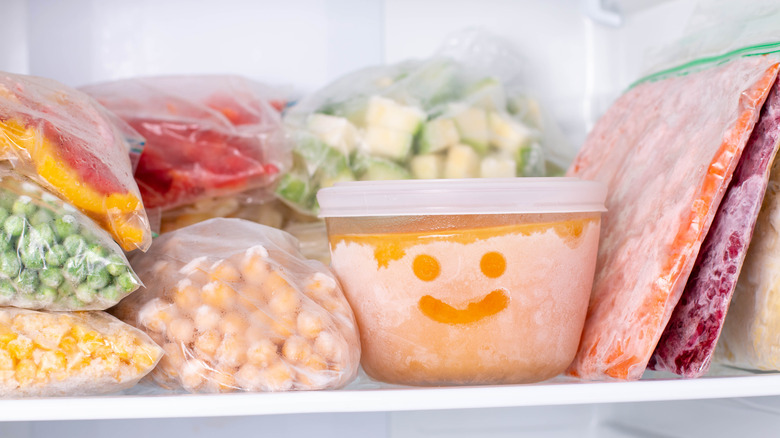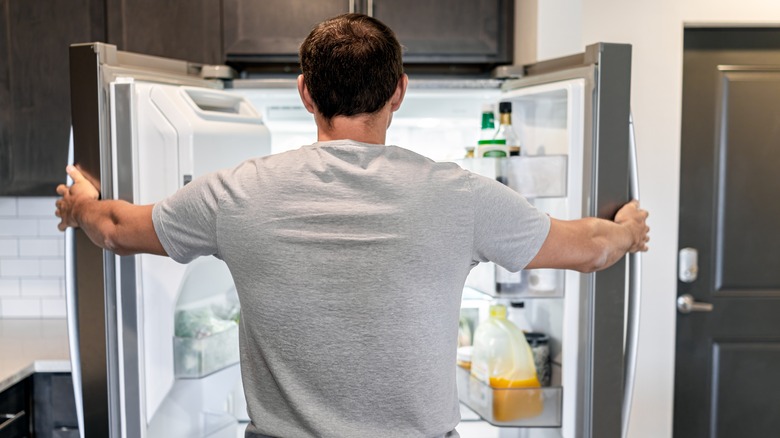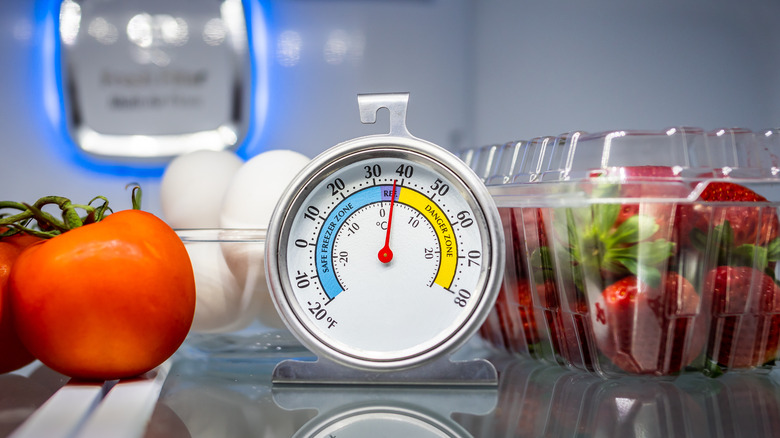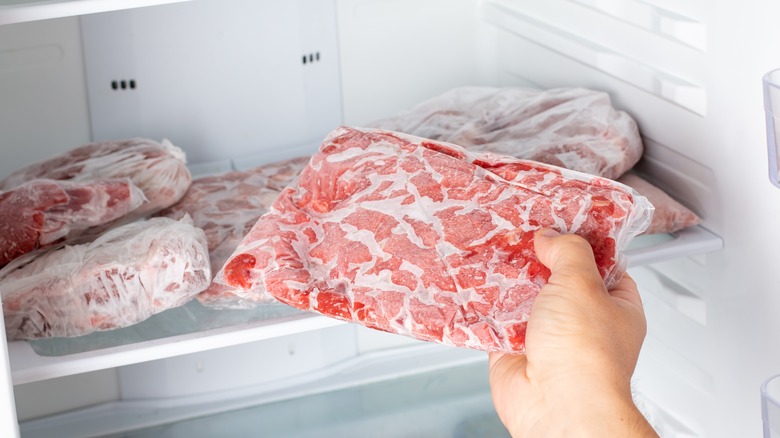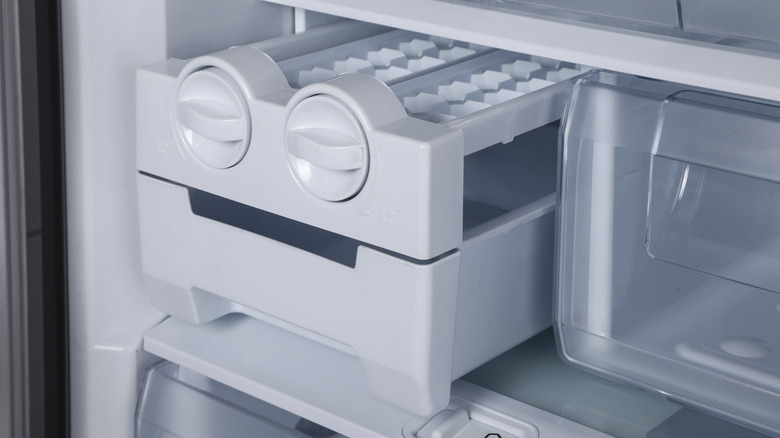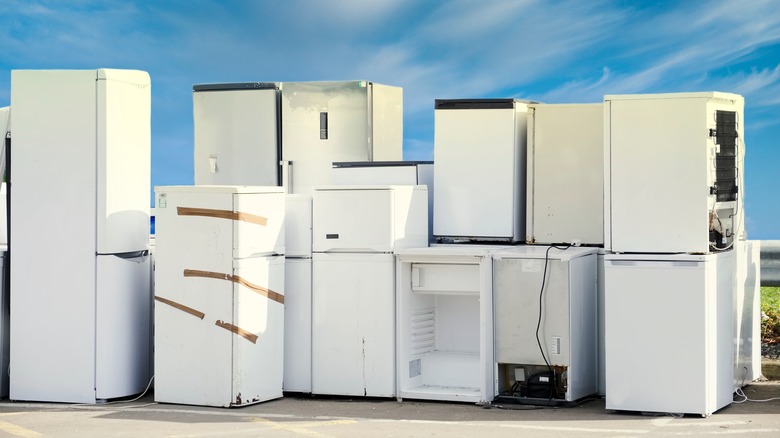Why Ice And Frost Are Forming In Your Freezer, According To An Expert
Frost and ice buildup in the freezer can be a big problem for homeowners. As WebMD notes, frost is often called freezer burn when it starts affecting food items. While this isn't a sign of food that's no longer edible — as the prevailing wisdom often suggests — WebMD reports that food affected by frost becomes duller in taste, may smell bad, and can suffer from dramatic texture changes. All of these can make your food worse and, indeed, may cause you to ultimately choose to throw away something that's been in the freezer rather than use it.
Understanding the reason for ice and frost buildup in your freezer is half the battle. By learning how these problems form, you can prevent them from happening in the first place! In an exclusive interview with House Digest, freezer specialist Jeff Russell, the owner of Diamond Factory Service, talks through some of the common problems that lead to frost buildup inside the freezer.
Make sure the doors are closing properly
The first thing you should check is the simplest explanation for freezer issues. Ensuring that the door is completely closed can solve many problems associated with temperature issues, frost buildup, and safe food storage practices. Russell says: "If the freezer door is not sealed airtight every time it's closed, then warm air can enter inside causing condensation to form on surfaces, leading to ice and frost buildup. Additionally, if the door isn't shut often enough, then humidity from outside might be able to get in as well, and result in frost."
Carefully closing your doors prevents this buildup of condensation (that enables frost on windows, inside freezer compartments, and elsewhere throughout the home), but it's also worth looking into the seal that's created when the door closes. If the seal isn't secure, your door is as good as open, even after you've swung it closed.
Check the temperature settings
In the same way that trapped moisture can condense on the surfaces if your freezer door is allowed to be left standing open for too long, the temperature settings can play a role, as well. Russell notes that "ice and frost may also be forming because the temperature setting is too low. Setting the temperature inside your freezer in this manner can cause ice crystals to form due to water vapor in the air becoming frozen upon contact with colder surfaces." Not only is overexposure to warmer air a problem, but the moisture that occurs naturally in the foods you place inside the freezer can be affected by this setting that's too extreme.
Whirlpool reports that a safe freezer temperature is one chilled to at least 0 degrees Fahrenheit (or -18 degrees Celsius). Keeping your freezer at or near these levels will ensure that foods placed within it aren't exposed to harsh extremes, allowing their internal moisture content to remain intact.
There may be ventilation issues
Ventilation problems can wreak havoc throughout your home. The freezer is no different. Russell notes that "ice and frost may also form because there is not enough ventilation. Freezers rely on airflow around their internal components so that they can effectively cool down food items stored within them. If there is insufficient ventilation (caused by either poor overall design or blocked hot air exhausts), then this could lead to a buildup of humidity — and therefore an increase in frost and ice formation over time."
Experimenting with the placement of your frozen goods or evaluating the vents on the exterior of your freezer to check for blockages can help you shore up this part of the kitchen without having to expend much energy or money in the process. Moving your freezer away from any walls that may be in direct contact with vents can also improve crucial ventilation within the box's interior.
Check your ice maker
Your frost issue can also be a product of accessories found inside the freezer. Russell says: "Ice maker problems can also cause ice and frost to form. Malfunctioning parts, like broken water lines or leaking valves within side-by-side refrigerator models may be responsible for excess moisture buildup; this can cause ice and frost formation within the freezer section even when the door remains closed tight."
If your ice maker is relatively old or you've seen a downturn in ice production recently, it could be a sign that it's causing frost issues. This isn't typically a problem in standalone freezers that sit in the garage or a shed behind the home. Standalone units don't usually have the same infrastructure that allows for leakages as an automated ice maker does. Still, if you make your own ice in trays regularly, the same leakage issues can occur. Keeping a careful eye on ice production can reveal your culprit.
When to replace your freezer
Finally, if your freezer is still acting up, even after checking on all of these potential issues, you may need a replacement. Russell says: "Generally speaking, if the freezer is more than 10 years old it is likely time to consider replacement. Additionally, if the cost of repairs is more than half the cost of a new unit, then replacing your freezer would likely still be less expensive in the long run."
Because of the lifespan of a freezer (or any appliance, for that matter), the value of repairs is reduced with each additional year you own the device. Eventually, the unit will cross over a threshold in which repairs no longer make sense, no matter the cost discrepancy between purchasing a new freezer and repairing your current one. Russell continues, saying, "if you have had multiple repair visits already and need more frequent repairs, then replacement may be more cost-effective and cause less stress in the long run."
